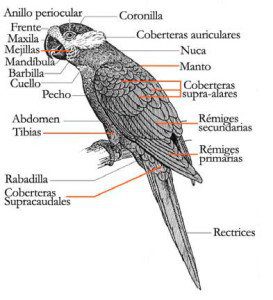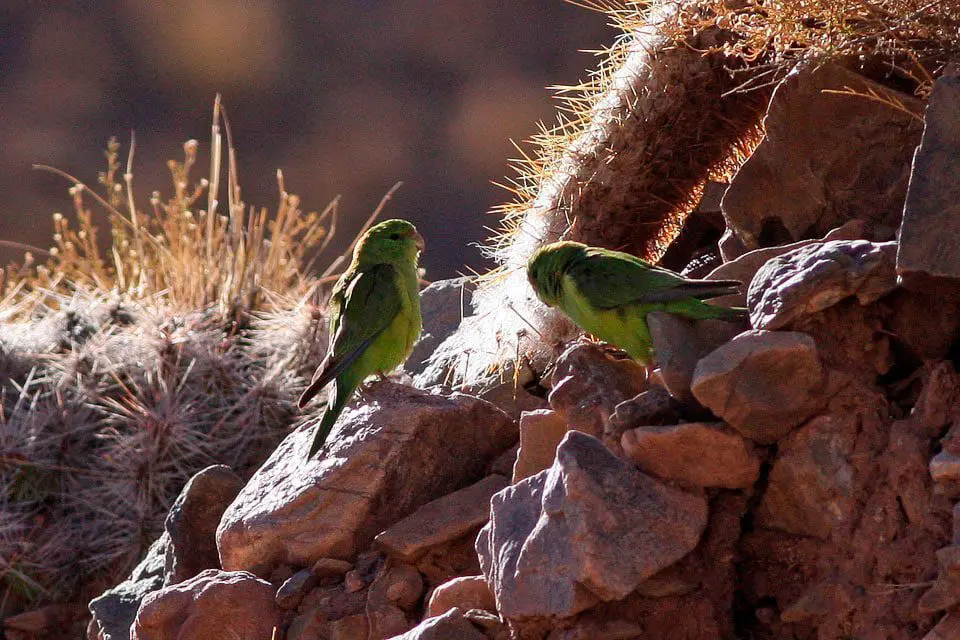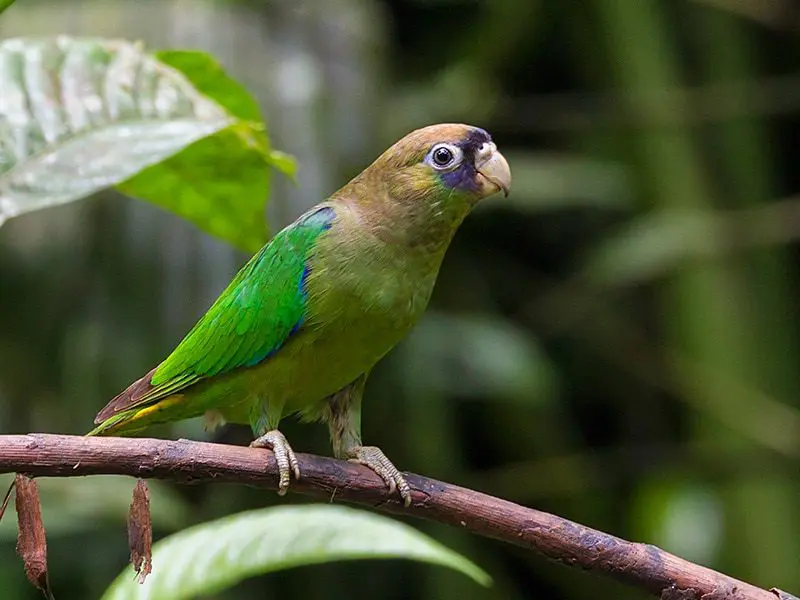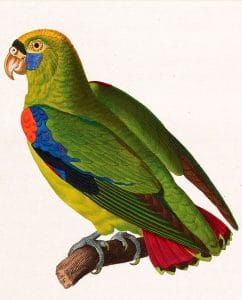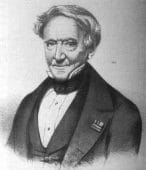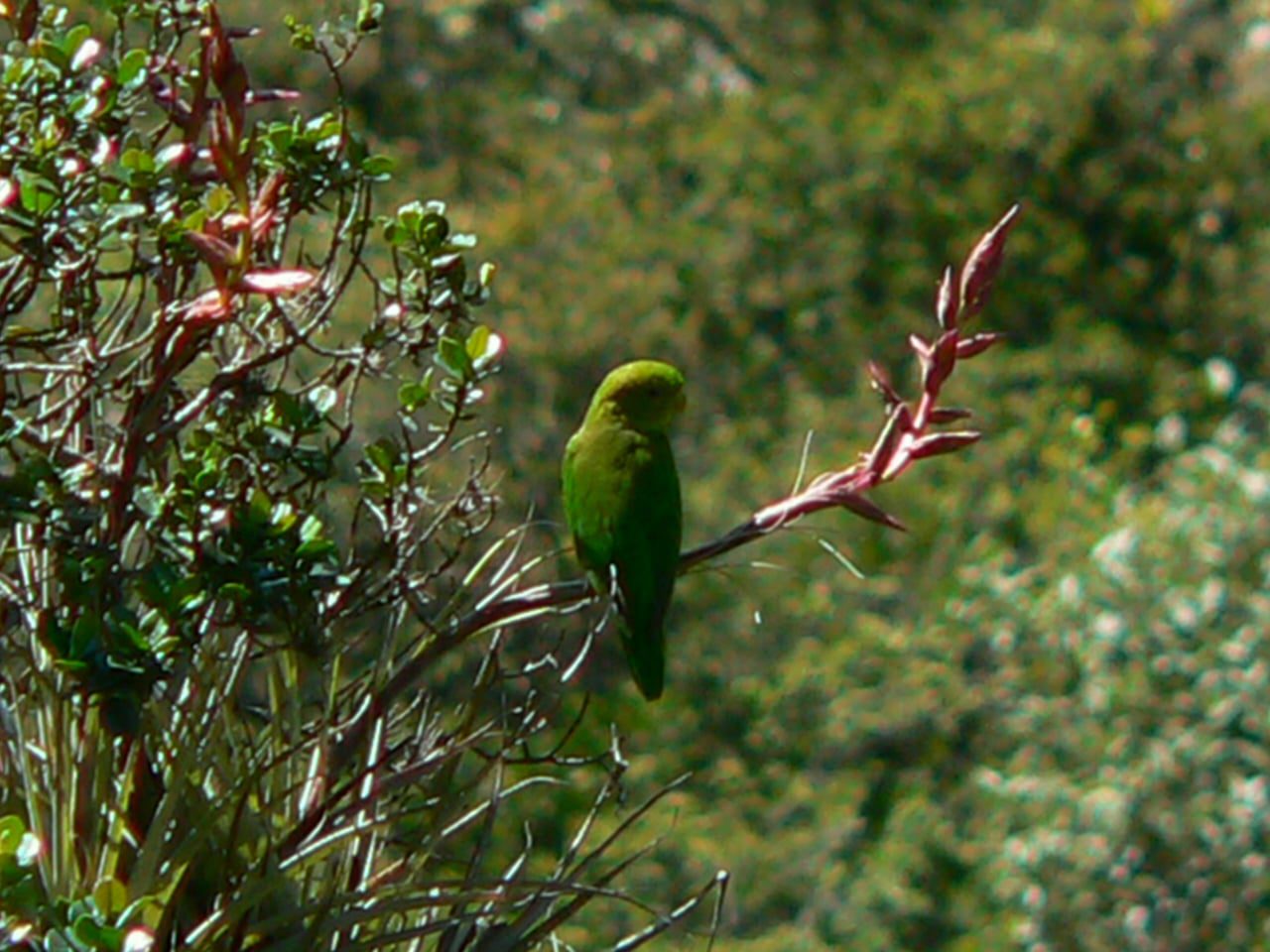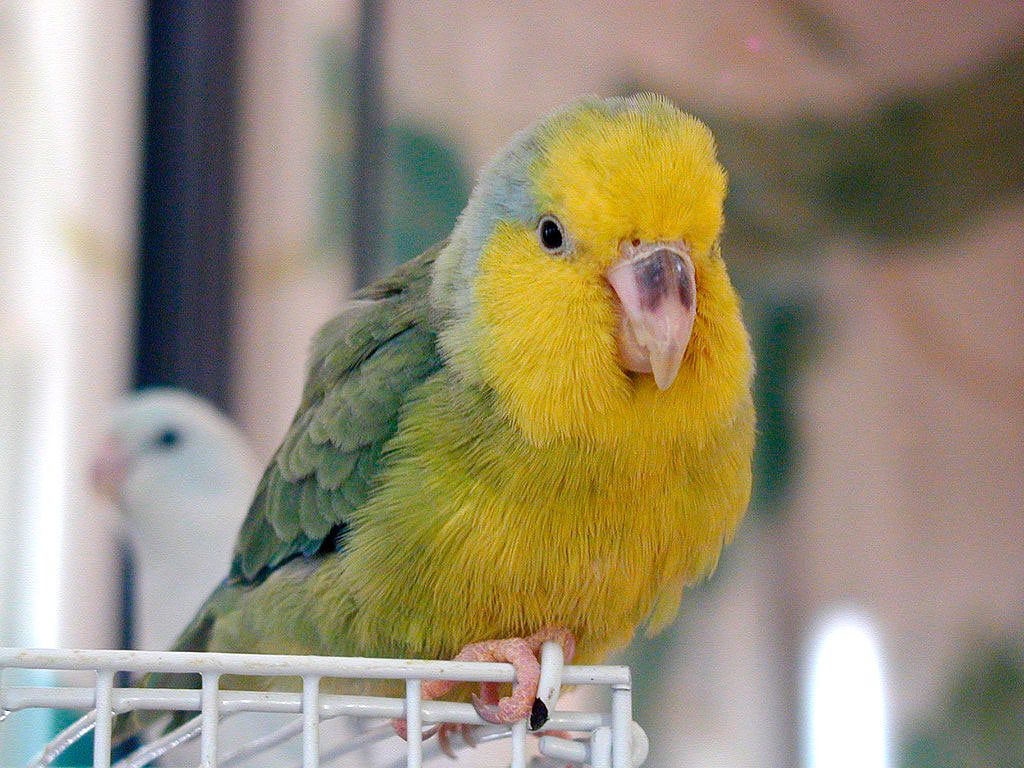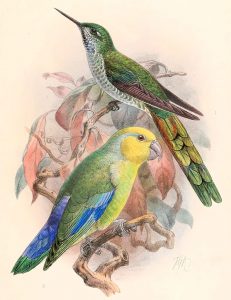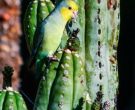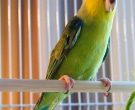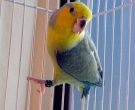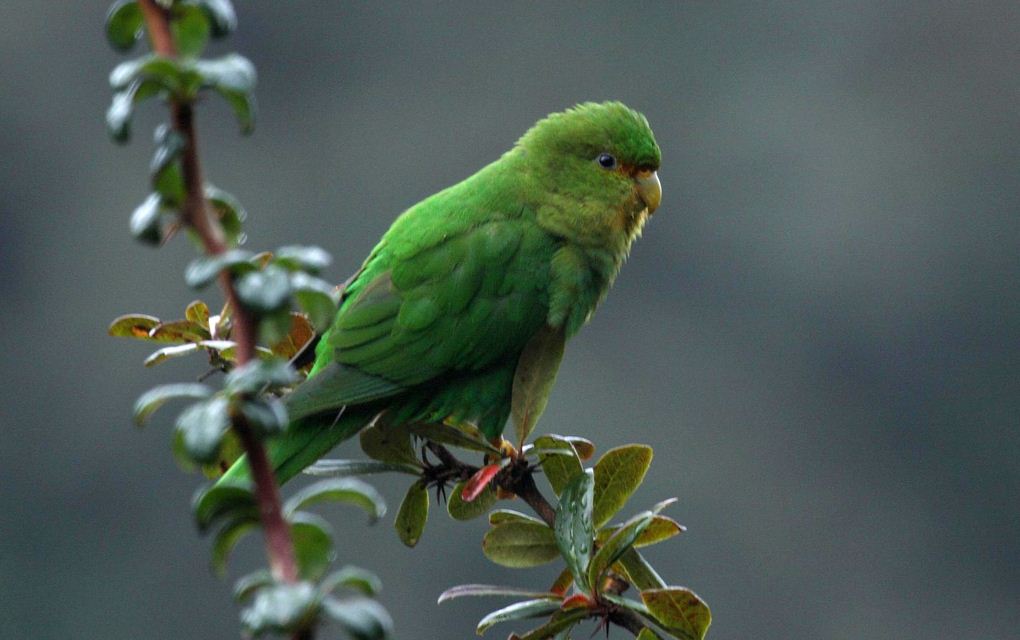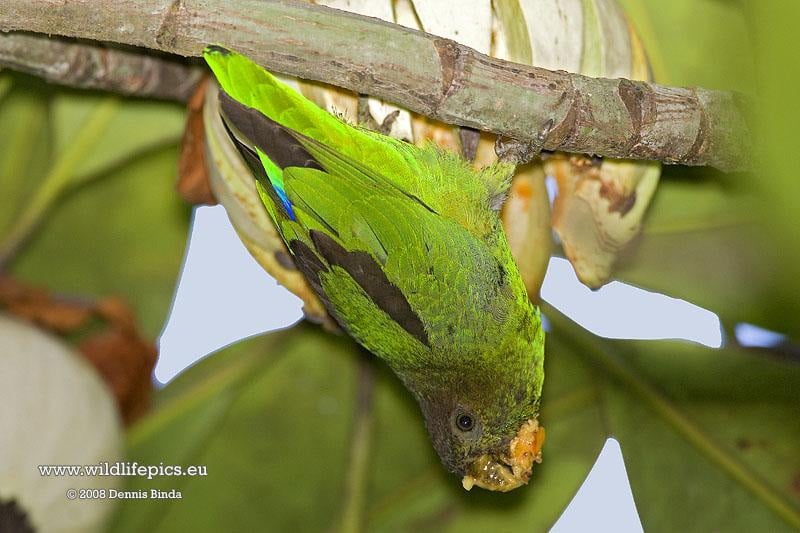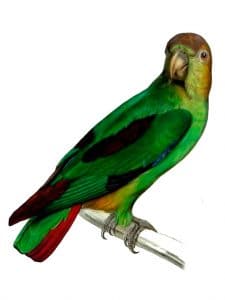Content |
|---|
Description:
17 to 19 cm.. height.
The Mountain Parakeet (Psilopsiagon aurifrons) is distinguishable by the face yellow and the belly yellow with dye-Green, bill pale, wing
with extreme blue (notorious is when closed), tail long. Bill and legs color clear. Iris black.
The female with face green and belly yellow-green.
Treated above as Bolborhynchus aurifrons.
- Sound of the Mountain Parakeet.
Subspecies description:
-
(Lesson, 1830) – The nominal,
Psilopsiagon aurifrons aurifrons
-
(Berlioz & Dorst, 1956) – With very little or nothing of yellow and very little dimorphic sexual, they resemble females of the subspecies nominal and robertsi. The females sometimes have the bill grey;
Psilopsiagon aurifrons margaritae
-
(Carriker, 1933) – It has yellow only in the forecrown, sides bill, throat with green dye, and belly green with yellow line on the sides.
Psilopsiagon aurifrons robertsi
-
(Burmeister, 1860) – With mask facial blue sky and no sexual dimorphism
Psilopsiagon aurifrons rubrirostris
Habitat:
Video – "Mountain Parakeet" (Psilopsiagon aurifrons) |
|---|
It is found in variety of ecosystems, forest in gallery, Puna and crops, from 1000 to 2900 m (sometimes from sea level up to 4500 m). It is possible to carry out local migration after reproduction. gregarious.
Reproduction:
Sometimes They nest colonially, in cracks or holes in inaccessible Rocky escarpments.
breeding station: From October to December, North of Chile, February/March, Argentina.
Food:
It feeds on shoots, seeds, vegetables and fruits.
Distribution:
Size of the distribution (reproduction / resident): 820.000 km2
Can be found in the Centre and South of the Andes, from Peru until Argentina and Chile.
Subspecies distribution:
-
(Lesson, 1830) – The nominal,
Psilopsiagon aurifrons aurifrons
-
(Berlioz & Dorst, 1956) – The Andean slopes in the South of Peru, Bolivia, North of Chile and Northwest of Argentina.
Psilopsiagon aurifrons margaritae
-
(Carriker, 1933) – The Valley of the Maranon River in the Center-North of Peru.
Psilopsiagon aurifrons robertsi
-
(Burmeister, 1860) – The sheds Andean of the Northwest Argentine, between Catamarca and Córdoba, and South of Chile
Psilopsiagon aurifrons rubrirostris
Conservation:
State of conservation ⓘ |
||
|---|---|---|
 Minor Concern ⓘ
(UICN)ⓘ
Minor Concern ⓘ
(UICN)ⓘ
| ||
• Current category of the Red List of the UICN: Least concern.
• Population trend: Stable.
This species has a very large range, and therefore not it approaches the threshold of Vulnerable on the criterion of size of the area.
The trend of the population seems to be stable, and therefore, the species is not approaching thresholds for vulnerable under the trend of criterion.
For these reasons, the species is evaluated as Least concern.
"Mountain Parakeet" in captivity:
It´s rare in captivity. They are very susceptible to stress and disease, so many die during the process of acclimatization. It is good to acclimatize it in a large aviary with other birds. Prone to deficiency of vitamin D3.
Need of hiding places so that they may disappear from view.
Alternative names:
– Mountain Parakeet, Golden-fronted Parakeet (English).
– Toui à bandeau jaune, Perruche à bandeau jaune (French).
– Zitronensittich, Zitronen-Sittich (German).
– Periquito-da-cordilheira (Portuguese).
– Catita de Frente Dorada, Catita Frentidorada, Catita serrana chica, Perico cordillerano (español).
– Catita serrana chica (Argentina).
– Perico cordillerano (Chile).
– Perico Cordillerano (Peru).
– Cialla (Aymara).
scientific classification:

– Order: Psittaciformes
– Family: Psittacidae
– Genus: Psilopsiagon
– Scientific name: Psilopsiagon aurifrons
– Citation: (Lesson, 1831)
– Protonimo: Psittacus (Lathamus) aurifrons
Images "Mountain Parakeet"
|
Two Mountain Parakeet views between Uquia and Yavi, Salta, Argentina |
|---|
Sources:
– Avibase
– Parrots of the World – Forshaw Joseph M
– Parrots A Guide to the Parrots of the World – Tony Juniper & Mike Parr
– Birdlife
– Parrot Book, Parrots and macaws Neotropical
– Photos:
(1) – Mountain Parakeet; two in a cage By TJ Lin (originally posted to Flickr as mountain oarakeet) [CC BY-SA 2.0], via Wikimedia Commons
(2) – Two Mountain Parakeets seen between Uquia to Yavi, Salta, Argentina By Ron Knight from Seaford, East Sussex, United Kingdom (Mountain ParakeetUploaded by snowmanradio) [CC BY 2.0], via Wikimedia Commons
– Sounds: (Xeno-canto)

